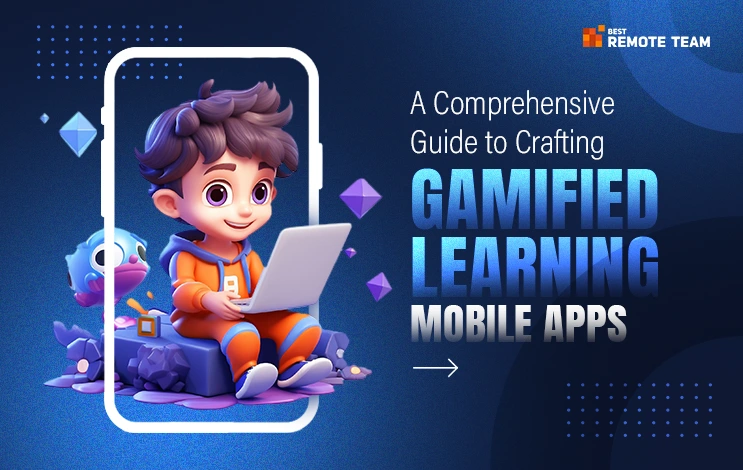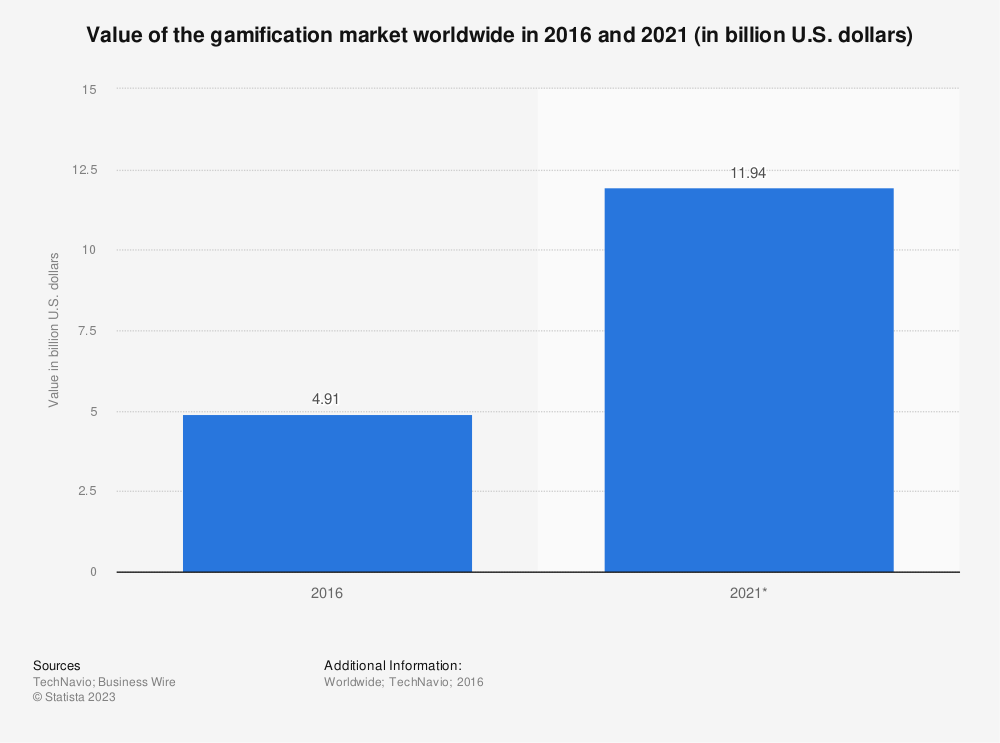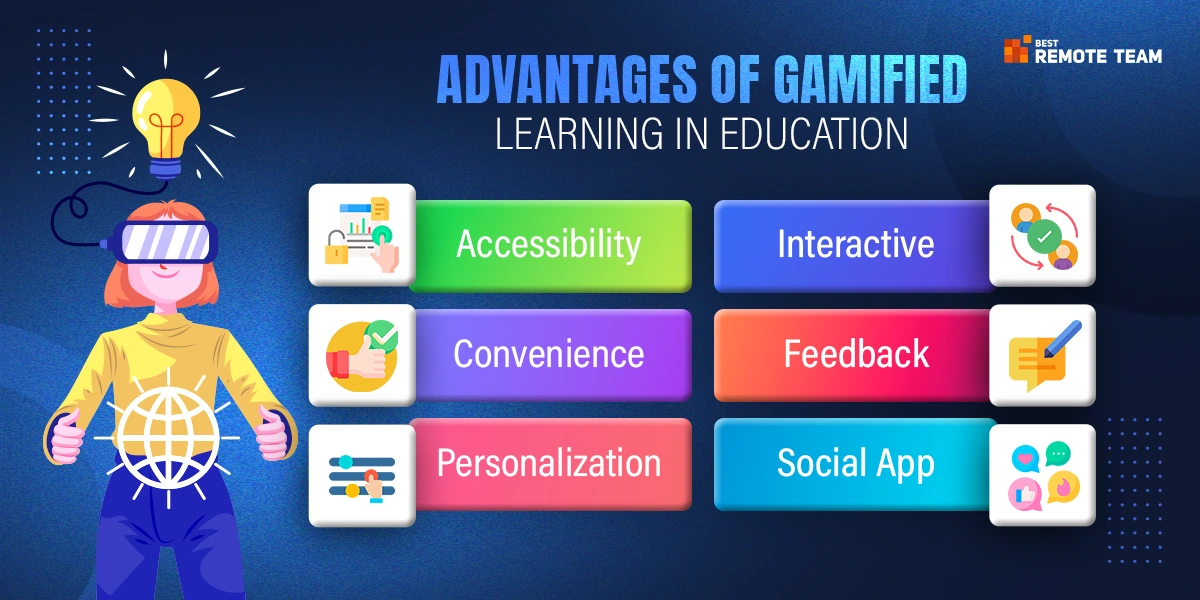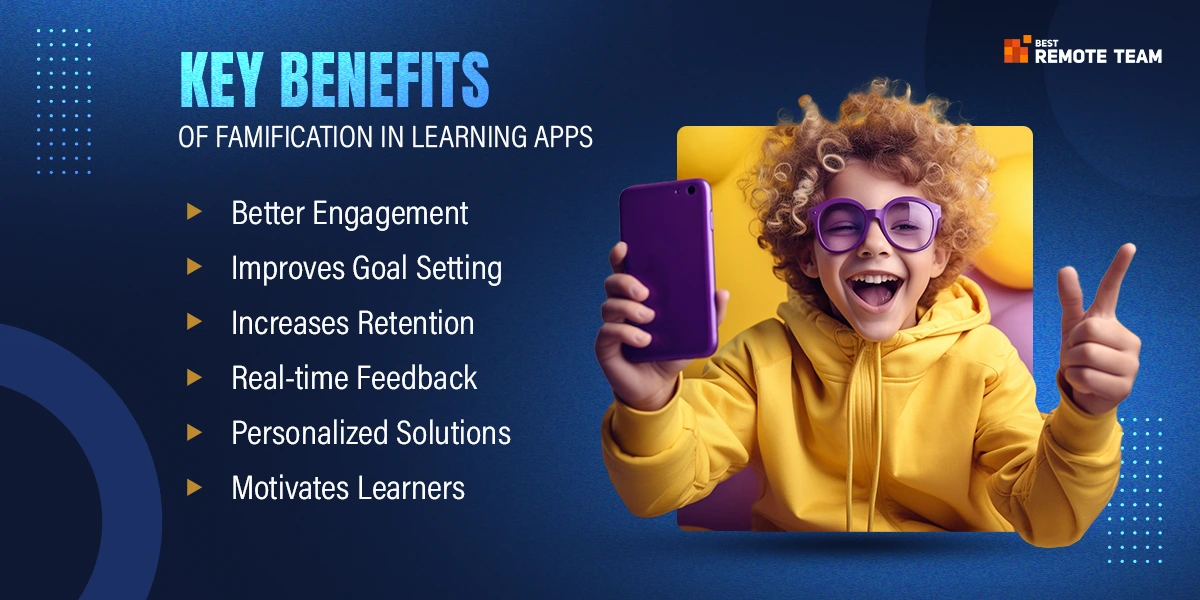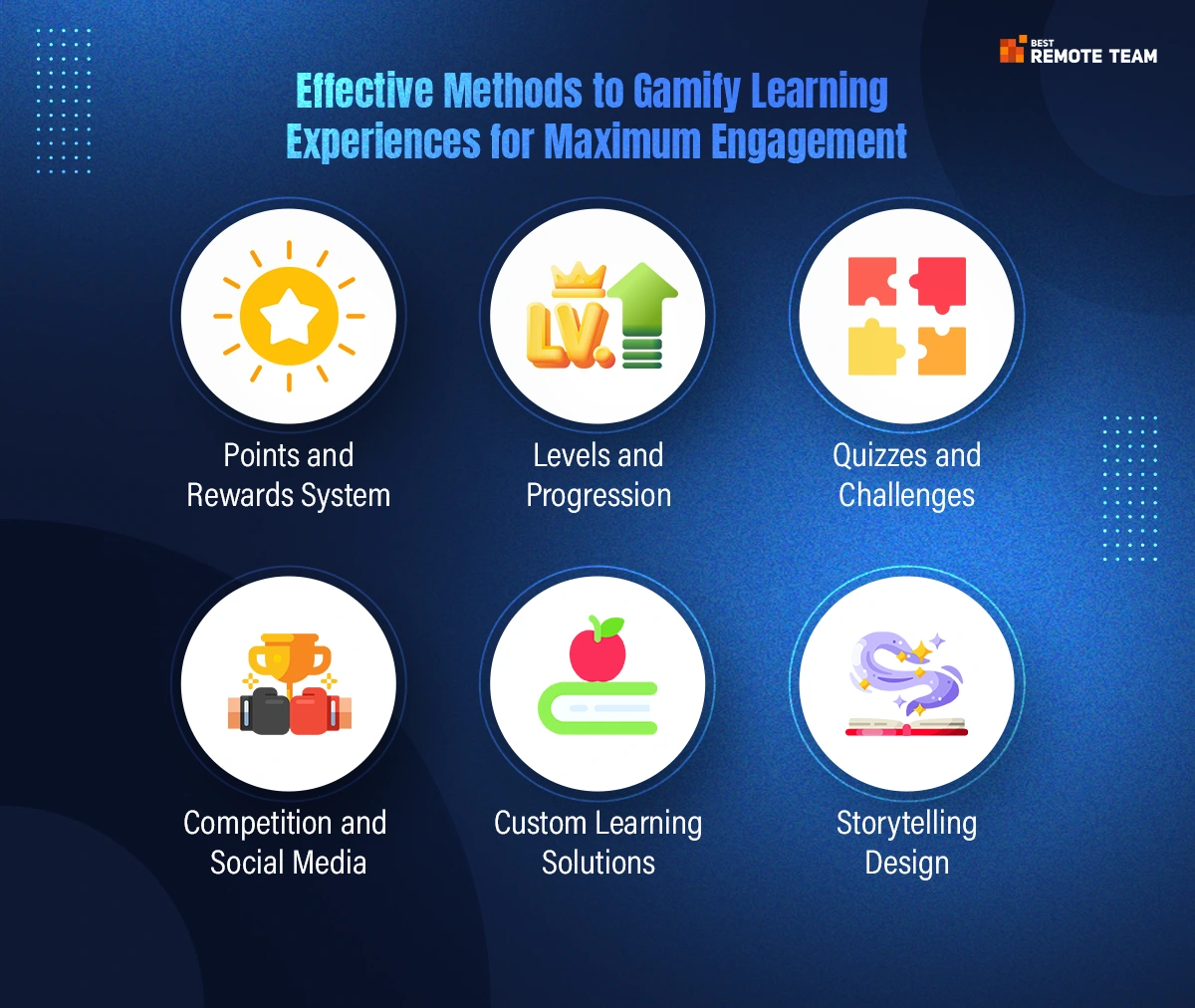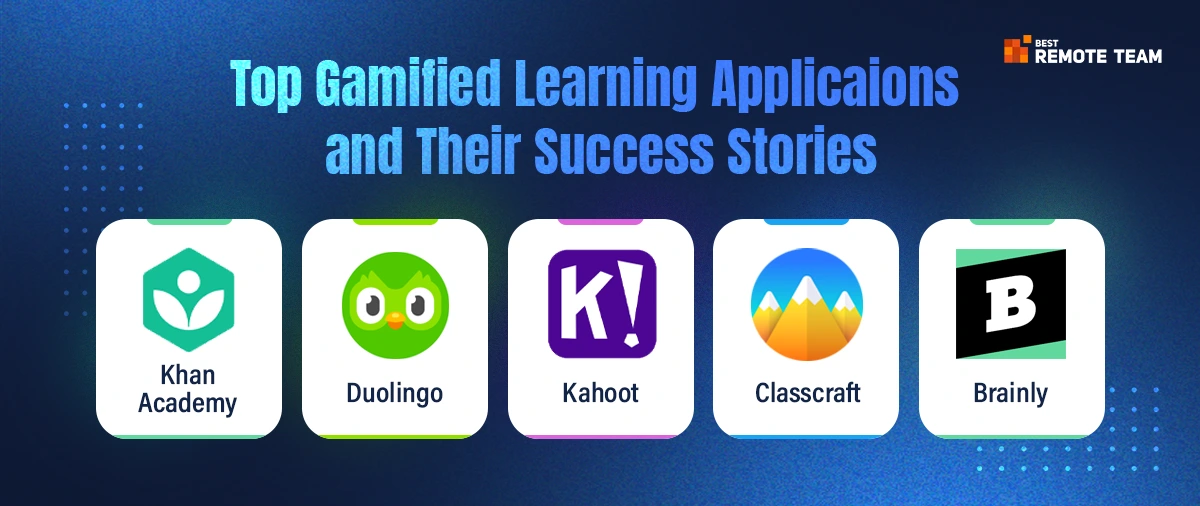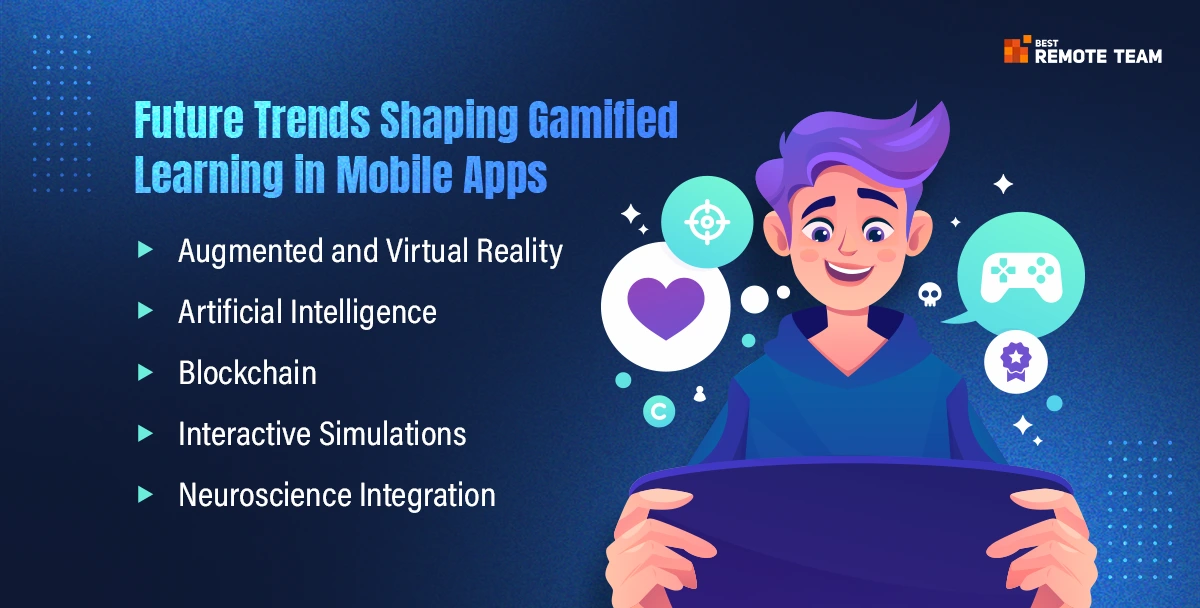What is Gamification in eLearning?
When you add elements of game design to your eLearning application, it is called gamification. Using this approach, you aim to increase engagement and enhance learning experiences.
Basically, you’re learning app becomes a sort of game. For example, instead of saying student, your app will call them players. The assignment will become a game challenge or a quest.
There will be quizzes and levels. At the end of each quest, the student will earn points that can be used to purchase something within the app.
When your entire app is filled with game components, learning becomes fun and interesting. However, you must ensure a good structure for your mobile application.
Why Mobile Apps for Gamified Learning?
Gamification techniques and mobile apps go hand-in-hand. You must develop a robust app solution to gamify the education software idea. Here’s why.
#1) Accessibility
Whether your target audience is commuting or traveling to another country, you stay connected with the app. As a result, they can learn from anywhere at any given time.
#2) Convenience
Mobile devices are small and convenient. You can carry them anywhere and complete your learning. It leads to greater engagement and better learning experiences.
#3) Personalization
Mobile apps can be personalized using the data shared by the customers. Your app can analyze their in-app behavior, progress and performance to unbox challenges and define the learning path.
#4) Interactive
Gamification requires interactive elements that can keep the user engaged. This is possible with mobile apps as the interface and environment are interactive and immersive.
#5) Feedback
When you have a mobile application, it becomes easier to track the progress of the user. Moreover, you can also get their feedback for the app. This allows you to implement the necessary changes and upgrade the app to suit your user’s needs.
#6) Social App
It is easier to engage your users when they can connect with friends on the Internet. By adding leaderboards and multiplayer challenges, you are increasing the competition spirit. This would help them stay on the game longer and learn faster.
Benefits of Gamification in Learning Apps
When you are planning a learning application, gamification is an important ingredient. It makes the app more engaging and usable. Let’s look at all the benefits of this ingredient.
#1) Better Engagement
When you add elements like quizzes, multiplayer challenges and leaderboards, you are making learning fun. These game elements demand a lot of attention and participation. Moreover, it can keep your audience on the application for a longer time.
#2) Improves Goal Setting
When you have a structured learning mode, you improve goal setting. The user is clear about their objectives and learning outcomes. They have a complete understanding of what to expect from this learning app. Moreover, they are motivated to use the app
#3) Increases Retention
When you add game elements, you encourage critical thinking and better reasoning abilities. This would enhance learning experiences. As a result, you can improve retention.
#4) Real-time Feedback
You can access the user’s feedback and friction immediately from the application. This allows you to improve the structure and game design for better interactions.
#5) Personalized Solutions
When you add game elements to the learning application, you can adapt the app to the learner’s needs. You create an application that is more in sync with the user’s learning needs.
#6) Motivates Learners
Your users will get rewards and badges for every win. They would get enough chances to complete a level. Moreover, they can compete with friends from the application. This makes learning fun and motivating.
The Challenges and Strategies in Gamifying Mobile Education Apps
Gamification in mobile apps is indeed the need of the hour to improve engagement and conversions. However, the target market faces diverse challenges while implementing this solution. Let’s look at each persona within the market and study their challenges.
#1 Educators/Teachers
They are the soul of the education industry. From offering quality content to devising numerous learning opportunities, they are the hub of knowledge. Despite their intent to introduce gamification, they face specific challenges.
- Lack of Technical Skills: Several educators and teachers are not proficient with technology. As a result, they avoid using it. If you create mobile applications for them, you might need to train the users. Moreover, you might need to add features with a low learning curve for engagement.
- Budget Restrictions: One of the biggest challenges facing educators planning to move to gamification is cost. They may need a more structured and phase-wise plan to launch a gamified application.
#2 Developers and Game Designers
While developers understand gamification, they face challenges implementing it in the education industry.
- Understanding the Education Needs: They need to be well-versed with the specific needs of the app. If they aren’t aware of the purpose, goals and objectives of gamification, they cannot use appropriate elements.
- User Engagement: Structure is key to engaging users in the gamified mobile application. If they are unable to devise the exact structure, they may face issues with user engagement. Moreover, they should know what aspects make the users stay on the app.
- Cross-platform Compatibility: It is crucial for developers to make applications that extend seamless experiences across multiple platforms. This is one of the biggest challenges the developers/designers face while choosing the tech stack and implementing gamification.
#3 Students and Lifelong Learners
Students are the primary users of the education applications. When implementing gamification, it is important to address their challenges.
- Quality of Content: The students seek quality content that would inspire learning while providing them with context. Gamified learning apps need to focus on the content along with the game design to ensure better engagement.
- Motivation: There is a lack of motivation among students to focus and learn. Whether it is distance learning or in-class, they need to be encouraged with interesting and interactive elements. It is crucial to choose the right gamification elements to increase motivation.
- Accessibility: Students belong to diverse backgrounds. It is important for the gamified app to be more inclusive. They should cater to all types of disabilities and issues as well for better engagement.
#4 eLearning Professionals
The professionals require a solution that can enhance their learning and help them stay relevant.
- Upskill Solutions: Gamified mobile apps should offer industry professionals the ability to stay relevant. They want an app that would help them upskill and grab better opportunities.
#5 Tech Enthusiasts
Tech enthusiasts want to offer innovative solutions to their users. When implementing gamification, they may face a few challenges.
- Cutting-edge Solutions: Cloning an application may not drive the desired users to the application. That’s why it is crucial to be unique. One of the biggest challenges is to find a cutting-edge solution with the same gamified learning approaches. There are limited gamification approaches, and this can act as a restriction for innovation.
- Usability vs Sophistication: Tech enthusiasts may want to add layers of functionality and features to make apps stand out. However, it is equally important they choose to be usable and user-friendly. This battle must be sorted during the planning phase to release a valuable application.
Top 6 Methods for Gamify Learning Experiences
We touched upon the gamification methods you can add to your learning applications. At this point, let’s expand these approaches and learn more about them.
#1 Points and Rewards System
This is the first method of gamifying your learning app solution. In this method, the user of the app will earn points for all the tasks they have accomplished.
For example, if they have completed a particular topic, they will earn points. Similarly, they will earn points for each quiz they have successfully completed. The point system is pre-defined, based on the tasks and the user’s performance.
The best part about this system is that your user can easily track their performance and take the necessary actions.
Now, let’s understand the rewards system in this method. Users can accumulate the points that will lead them to the rewards. You can define the rewards against the total points.
For example, if they have completed 15 tasks successfully, it means they have earned 15 points. You can assign a badge for this number.
Apart from badges, users can also get certificates, unlock levels, or get unique content in this approach. The rewards celebrate the milestones achieved by your users while using the application.
The points and rewards system in mobile app development motivates the users to complete their learning. As the rewards mark a positive association with learning, it is motivating and helps retain the users.
#2 Levels and Progression
In this gamification approach, content is used to engage the users. The entire subject is divided in a structured format via topics and levels. There is a logical progression in this method. As the user goes one level up, the difficulty level increases.
Each level is carefully designed and the transitions are planned in a structured manner. The idea behind this method is to keep the users engaged and offer them foundational stability.
Each level comes with challenges and tests. The user has to complete the level, clear the challenges and pave the way for the next level. The content for each level will provide conceptual clarity and test the user’s knowledge at the end. This method will enable an engaging learning experience.
The main challenge in this method is to increase the difficulty of levels while motivating the users. You cannot add dry and boring challenges. At the same time, it should match the level of the user and encourage them to solve it.
The idea behind implementing this method is to inspire learning and help the users progress.
#3 Quizzes and Challenges
Quizzes are a great way to encourage users to stay on the application. It also helps reinforce the concepts better and provides an excellent gateway to learning. You can make learning interactive and fun using this method. It helps you spice up your bland assignments.
As these quizzes are on a mobile app, you might want to use the multiple-choice variety to drive interaction. It is important for these quizzes to evaluate the critical thinking and reasoning abilities of the user.
At the same time, you must check their ability to apply the theoretical knowledge to real-world applications. make sure to introduce diverse quiz formats for better interaction.
If you want to increase the challenges and improve learning, you can offer timed quizzes. This would make the gamification interesting and exciting.
#4 Competition and Social Media
Social plus gamification is an incredible pair that can enable better learning experiences. You can allow users to compete with people within the application for the top spot. Create leadership boards within the application, and foster a sense of community.
The idea is to encourage social learning and offer a healthy competitive environment. The users can share their achievements and also discuss the challenges within the community.
This method can encourage more users to participate in the quizzes and competitions. This would help them learn better. It would also help them analyze their strengths and weaknesses. The inner desire to hit the top spot would inspire learning and participation.
You can also create a room for collaboration with the integration of social and gamification. This would encourage more people to partner and play. The collaboration plus competition would drive better learning experiences and enhance their achievements.
#5 Custom Learning Solutions
No two users of the gamified learning app are the same. They have their strengths and weaknesses. It is crucial for learning apps to identify these and offer quizzes/tasks that favor their needs.
Using AI algorithms in your learning application can help you plan personalized content to meet the user’s ability. You can tune the difficulty levels and tasks to meet their unique requirements.
These custom learning solutions are founded using the user’s learning history, their strengths and the topics they need help with. Moreover, they are planned after considering their participation levels and achievements.
When the entire solution is designed to meet the unique needs of the users, they may engage better. It would also help them meet the desired goals. Moreover, using this method, you can introduce self-paced learning that makes the process enjoyable.
#6 Storytelling Design
When you combine storytelling with game design, you get a more narrative-driven gamified application. This means you use characters and story plots to build the game. It would also pique their interest levels and make the learning process smooth.
While using this approach, you must design characters and plots that are relevant to the subject. It should resonate with the user, and encourage them to use the app for learning. This method makes learning fun and easy. Moreover, it can help enhance the overall experience of the user.
Using narratives, you can introduce abstract concepts in a better way. It also helps improve the application of the concept and enables critical thinking ability.
Top Gamified Learning Applications-Success Stories
Here are a few top gamified learning applications that have transformed into successful stories.
#1 Khan Academy
Khan Academy is a leading learning platform that offers quality content across age groups. It has implemented gamification to increase engagement. They have added interactive assignments, more collaborative approaches and progress tracking to gamify learning.
Mastery learning is their key feature that helps students accomplish mastery in their desired subjects.
#2 Duolingo
This is a language learning app that introduces the points and rewards method to gamify learning. They have also added several levels to make the solution interactive and interesting.
The users can unlock achievements and unravel rewards for each level. This offers a more intrinsic motivation to continue learning and mastering the language.
#3 Kahoot
Kahoot is an interactive learning platform, where educators can create quizzes and discussions easily. It offers an excellent way to introduce gamification and make remote learning interactive. It is also used within classrooms to engage the students.
There are quizzes, competitions, and leaderboards that encourage the students to learn and master the subject.
#4 Classcraft
It is a role-playing learning application where you can convert your classroom into a more collaborative learning environment. It implements the essential game elements to create a more interactive learning adventure for the users. In this application, the students can collaborate to combat the challenges and overcome them.
#5 Brainly
This is yet another collaborative learning platform that implements gamification. Your users can use the community to ask questions, seek answers and learn from others. They use the point and badge system for more active participation.
Future Trends in Gamified Learning to Watch Out for in 2024
Gamification has extended unique learning experiences in the education industry. However, this is just the beginning of a brilliant learning journey. Here are all the future trends that will shape this approach and make apps experiential.
#1) Augmented and Virtual Reality
AR and VR will merge the realities with the virtual world to create a more immersive learning experience. It will offer more realistic simulations and immersive demonstrations. Abstract concepts will gain lifelike vision with this technology. It will help improve the learning environment and ensure conceptual clarity.
Also read: Augmented Reality in Education: The Future of Smart Classroom
#2) Artificial Intelligence
AI will go beyond understanding the user’s progress and history. It will start studying the learning patterns, preferences and weaknesses to create a more custom learning path. AI will also help offer dynamic content to meet unique user needs. It will help dive into the world of self-paced learning.
#3) Blockchain
Blockchain would be used to increase the credibility and transparency of the learning app. It would also help secure the badges and certifications within the application. Using this technology, the users can be assured that the certificates will remain intact. You can also introduce the portability of the achievements for better record management.
#4) Interactive Simulations
Theoretical concepts can be boring. Moreover, it is not easy to understand the applications unless you have a visual in front of you.
Interactive simulations can bring these theoretical concepts to life. It will create a more practical visual of the concept and offer hands-on experiences to the users. This would encourage better learning.
#5) Neuroscience Integration
The learning process must undergo gradual change to adapt to the new needs of the user. Integrating with neuroscience and cognitive science, you can easily gain insights into how the brain absorbs information. It can help you plan better content and release more engaging solutions.
Limitations to Gamification in Learning Experiences
Gamification is indeed a great way to support learning and enhance engagement. However, you will find several limitations to implementing this approach.
#1) Emphasis on Rewards
If your application is driven by rewards, it may not lead to intrinsic motivations. Users in this case are motivated by the rewards and not their interest in learning. This can lead to learning gaps in the long run.
#2) Uniform Gamification
The gamified learning apps are driven by the “one size fits all” phrase. The gamification method is the same for all users of the app. However, it is important to note that what motivates one may or may not motivate the other. This can act as an engagement barrier for your learning application.
#3) Short-term Engagement
If you have built gamification into the app for short-term engagement, you aren’t building long-term learners. This focus can reduce the actual learning abilities of the user and undermine your app’s potential.
#4) Design Distractions
The positioning of the game elements plays a pivotal role in engaging the users. If there are too many elements or they are placed randomly, it can cause distractions. It will reduce the ability of the app and render it useless for learning outcomes.
#5) Poor Strategies
You must introduce the gamification strategies in the right manner into your application. If these strategies don’t align with your educational goals, they may hamper your experiences.
#6) Ethical Limitations
When you are adding gamification, you must be aware of the ethical considerations. It is important to plan for data safety and security. You must also determine ways to be more reliable to maintain your user’s trust.
Conclusion
Gamification is the key to motivating learning in the modern education system. It can help with additional conceptual clarity, upskilling, and assessing abilities. You can also seek help with doubt-solving, and compete with others to know your strengths and gain conceptual clarity.
There are various gamification approaches to use when building your learning solution. The most commonly used is the points and rewards system as it can attract more users and make learning fun.
It is crucial to plan your gamification approach using the learning outcomes and education goals. You must align the gamification strategy to the purpose of the application. It is equally important to design the elements and execute the strategy meaningfully.
Best Remote Team can help you find suitable tech partners to help plan and execute your gamified mobile application. We can help you find a team with experience and expertise in crafting top-notch gamified learning experiences. If you are working on an idea, let’s collaborate to execute it right.


